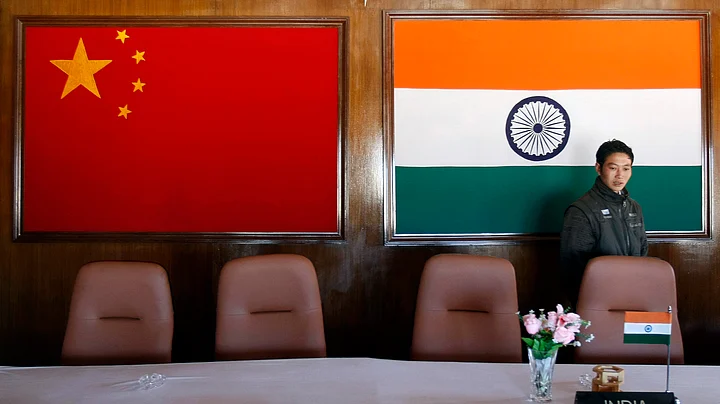Prime Minister Narendra Modi said very proudly during a visit to Russia last month that not a single bullet had been fired along the border between India and China for 40 years. Modi said in a panel discussion at the St Petersburg International Economic Forum:
It is true that we have a border dispute with China. But in the last 40 years, not a single bullet has been fired because of border dispute.
Modi spoke in the context of an "inter-connected and inter-dependent world" where, he said, countries may have some disputes but that should not stop them from moving ahead in "areas of collaboration", like India and China were doing.
India-China: A “Managed” Relationship
In December 1996, when then state President and Communist Party of China (CPC) General Secretary Jiang Zemin visited Pakistan after a trip to India, he made a very significant statement before the Pakistan National Assembly.
Speaking to Pakistani lawmakers, Jiang advised Pakistan to adopt the India-China template in their dealings with New Delhi and not let contentious issues come in the way of the development of their relationship on other fronts, particularly trade and business, and people-to-people ties. Jiang said:
If certain issues cannot be resolved for the time being, they may be shelved temporarily so that they will not affect the normal state-to-state relations.
Pakistan may not have paid heed to Jiang's advise, but with peace and tranquility being maintained on the border through a series of agreements, China and India had managed to keep the peace between them, despite a disputed border of over 4,000 km.
Indian officials have often called it a "managed relationship" where border disputes and differences over Tibet or Arunachal Pradesh were kept on a slow track of protracted negotiations. Side-by-side the two neighbours fast-tracked their trade and economic relationships to a level that made them critical elements of each other's growth story.
China’s Time Is Now
But the inexorable rise of strongman Xi Jinping coincided with muscular projections of Chinese authority and power on issues that it considered were “core” to its strategic and foundational principles, whether it be the South China Sea, Tibet, or the Belt and Road project that stood to seal China’s role as a global mercantile power.
As Xi moves to establish complete authority over all organs of party, government and military to become one of the strongest leaders of the People's Republic in recent times, it is clear that China has moved much beyond previous supremo Deng Xiaoping's dictum of "Lie low, bide your time".
China thinks its time is now and whatever it does will be in consonance and pursuit of this “Chinese dream” to become one of the world’s pre-eminent economic, military and political powers in what Xi terms “the great rejuvenation of the Chinese nation”.
In line with this political philosophy, China is flexing its muscle, reasserting sovereignty and expanding its arc of influence much beyond the South China Sea, to South Asia, Africa and even to Latin America.
But even as its Belt and Road connectivity project becomes a tool to project Chinese economic and cultural power, it has become uncompromising on issues that it earlier preferred to "lie low" on, with the latest being the row with India over disputed Bhutanese territory north of Sikkim.
Urgent Need for New Modus Vivendi
China’s bellicose position, coupled with a sharp escalation of threatening rhetoric, is consistent with its recent posturing over territorial and geostrategic issues.
Suddenly, says Shivshankar Menon, former Indian National Security Adviser and former envoy to Beijing, the old modus vivendi in India-China ties, that worked to enhance areas of common interest while seeking to balance rival sensitivities on their strategic concerns, has broken down and there is an urgent need to find a new modus vivendi.
There is little doubt that China’s aim is to contain India’s rising power through strategic linkages with the country’s neighbours, particularly Pakistan.
It seeks to browbeat New Delhi in the hope that the latter will back down and defer to Beijing's growing might. But India too has been unusually tough and unrelenting in its stances, whether on the CPEC, Arunachal Pradesh or Sikkim, and both have ended up staring down at each other, while underlining that they were a "different" country from the one that fought a war in 1962.
Who ends up blinking first will determine how this regional rivalry between the world's two most populous and aspirational nations plays out. But there is also a danger of the situation spiralling out of control if the brinkmanship continues. The position an unpredictable US takes might determine strategic equations in Asia in the coming years.
(Tarun Basu is a veteran journalist and founder-Editor of IANS. He can be contacted at tarun.basu@spsindia.in.
(This article was originally published in IANS and has been republished with permission. This is an opinion piece and the views expressed above are the author’s own.)
(At The Quint, we question everything. Play an active role in shaping our journalism by becoming a member today.)
